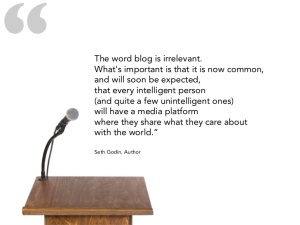Word of the week: Tweetnami, noun, a large wave or influx of tweets and pics on one hashtagged subject . Similar to Trending.
Personal Insight: This could be my last blog post, and I’m a bit sad about that… I don’t know if I’m ready to step back into the passive observer role!
So I started off the day a bundle of nerves and excited, ready to run 21 kilometres in the Trentham United Harriers Half Marathon! I am pleased to report, mission accomplished, though feeling rather worse for wear now!!
But I’m still pretty keen to publish the final post for this blog (for now), with my University assignment due at midnight, worth 20% of my final grade, gulp!
So without further ado, a final few observations, insights and ramblings 🙂
On writing a social media blog: Social media is massive! There really is so much to write about, it is very interlinked, and easy to go off in tangents.
On using social media while training for a half marathon: Mapmyrun.com – this phone application is awesome. Not only does it log your course, split the kilometre times, how many metres climbed, but it can post the info to your Facebook or Twitter profile, should you wish. Ok, ok, so that’s pretty standard these days.
The really cool thing is anyone can map a ‘running course’ and if out on a run your journey takes you through one of the pre-mapped courses, it ranks you firstly against yourself, and then against other runners out doing the same course. Two-fold benefits, 1) gives me my own personal bests and incentive to beat these 2) it opens up a whole new community of people that I am indirectly interacting with by competing against them.
= INCENTIVES TO RUN MORE/BETTER/FASTER
On social media for your career: Haven’t specifically blogged on this, but LinkedIn – great for networking with business contacts. I know in the States LinkedIn is big for filling vacant positions, I wonder if this will evolve similarly in NZ. We already have 2x excellent job websites in Seek.co.nz and Trade.co.nz/jobs.
^^Also, my blog is in the public sphere, and come July when I’ll be entering the job market again I may well be judged on this blog! Positively I hope!!
On getting ‘Likes’ in different social media platforms: Only crucial if winning a competition means getting the most ‘Likes’. I don’t reckon Likes are enough to build relationships and engagement. They’re non-committal, so easy to Like a page or post, and then promptly forget about it. The key I think is interactivity, actual relationships. That builds loyalty, commitment, familiarity and connection.
Some final words: The experience of writing a blog overall has been a fun, new challenge – I like writing, and am a bit of a perfectionist, so there has been much time tinkering with posts, yet sacrificing perfection because of time pressure to get lastest posts up and keep up with the rest of my Uni work.
I love social media! It has an important part in my life and I’ve enjoyed trying out some new media platforms while going through this blog journey. I’m keen in my next role of employment to have a hand in creating and implementing a social media strategy, putting all this good stuff I’m learning to use. (Wellington employers get in touch ;))
As much as I love the engagement and interactivity of social media, nothing beats a good old face-to-face conversation. Good friendships and relationships kick ass, don’t neglect them for the digital world too much 🙂
– Claire



















Recent Comments